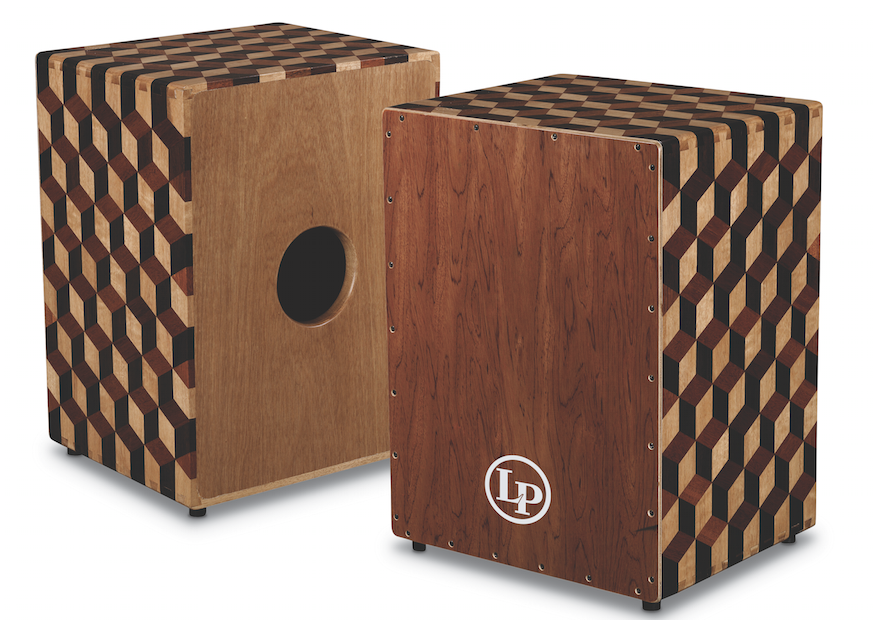
LP is offering some exciting options to its extensive line of cajons. The four models in this review include the smaller-sized, budget-friendly Peruvian Chico Solid Pine Cajon; the large Peruvian Ultra-Bass Cajon; the visually stunning Peruvian Solid Wood Brick Cajon; and the Peruvian Solid Walnut String Cajon. All four are made in Peru, which is widely recognized as the birthplace of the instrument. I was able to play-test them on a steady gig of mine that regularly calls for cajon.
The Peruvian Chico Solid Pine Cajon (LP8800PS) is relatively small in size and price, but tone and quality don’t suffer. The sides, bottom and top are all made of solid American pine, and the front playing surface is laminated higuerilla (a Peruvian tonewood). The overall quality of sound and volume that this cajon puts out is impressive. Because of the size, the bass tone is more of a tenor tone, but very resonant. The top of the playing surface provides a very dry, cutting snap that can keep up in a variety of situations.
The Peruvian Ultra-Bass Cajon (LP8800LB) is more of a Caribbean-style cajon, according to LP. The body is made of laminated pine, and the playing surfaces are made out of higuerilla laminate. Twice as long as most cajons, the extra space coupled with inner sound baffling enhances low end and bass effects. This cajon is a lot of fun to play, with bass that gets down into subwoofer territory. Both the front and back are playing surfaces—a cool feature. The back playing surface is smaller (about ⅔-sized), with the bass port underneath. It’s a little higher in pitch and is a great contrast in sound to the front surface. I would consider this a specialty instrument to have as an option along with your existing cajon. There are no wires in it, so it has a very open, woody tone coupled with the deep bass.
The Peruvian Solid Wood Brick Cajon (LP8800B) looks as good as it sounds. The top and sides are made with a beautiful mosaic of walnut, mahogany and almond wood assembled in an extraordinary cubical pattern. The front surface is higuerilla laminate. You will certainly stand out from the crowd of drab-looking wooden boxes with this one. The body of this cajon is slightly wider than normal, giving you a deeper and woodier sound, but with plenty of snap at the top of the playing surface. The sound really works well in quiet, more acoustic situations without amplified instruments.
The Peruvian Solid Walnut String Cajon (LP8800WS) is another visually striking cajon, albeit more subtle than the Solid Wood Brick model. The sides and top are made out of solid walnut, with a beautiful almond wood inlay, and the front surface is higuerilla laminate. To me, this is the pinnacle of what a cajon should sound like: deep but very controlled bass, and a very present woody tone coupled with a very cutting, dry snap at the top of the playing surface. Out of the four reviewed, this one was my favorite. It blends in with many different types of acoustic situations, yet stands out on its own in executing what a cajon should do.
The cajon has come a long way in the past 15 years. What started out as a humble packing- crate-turned-instrument in South America has now become a sophisticated and an established part of the percussion family. These four LP cajons work in a variety of situations for any percussionist and are all highly recommended. Prices range from from $215 to $554, and a carrying case is included with each model.